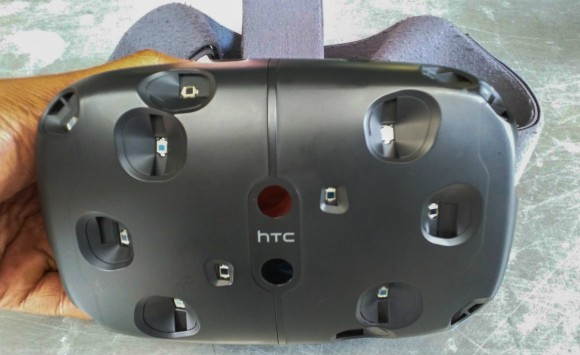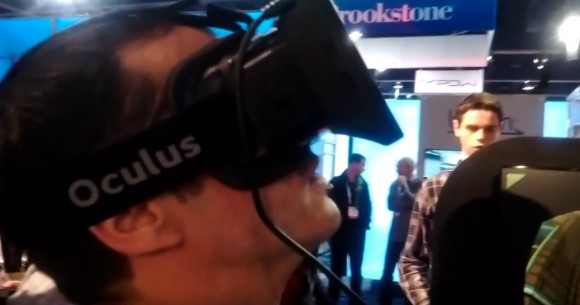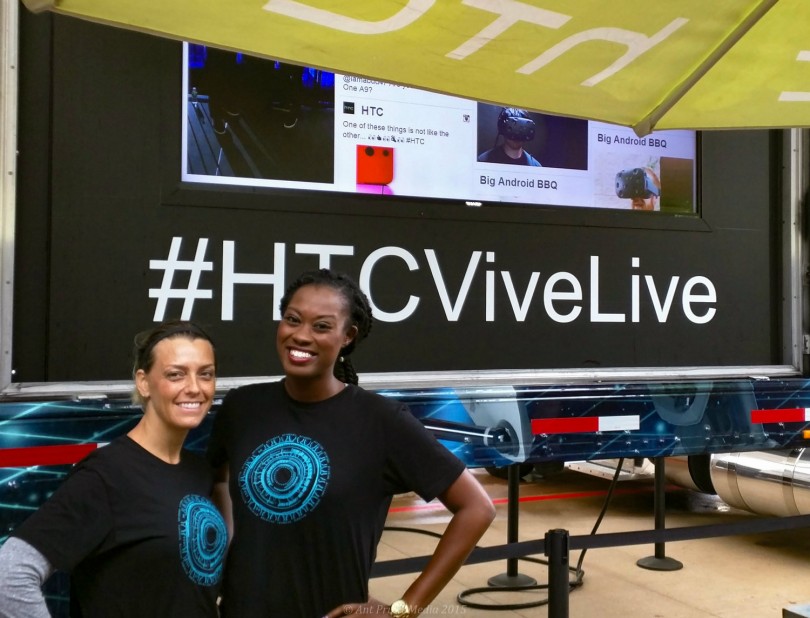aNewDomain – The geek and nerd in many of us reading aNewDomain has longed for days of virtual reality becoming…well…a reality. For the most part, VR has been a effort by startups and corporate partnerships that points a finger at “what could be.” These efforts have been tremendous and gave hope to the idea of virtual reality becoming a norm in day-to-day life, but it still lacked perfection. Recently I got my hands on the HTC Vive virtual reality device and I can never look at the VR concept the same. Seriously, I can’t.

Two years ago getting Mat Lee and I got a whirl on the Oculus Rift at CES. I had my trepidation. My primary concern was motion sickness. Sadly, I struggle with motion sickness. Whenever I play Call of Duty on my console or the classic Team Fortress 2 on PC, I have to prepare myself. I grab my sea bands, apply my ear drops and then hit the games. Yes, my motion sickness sensitivity is that bad. Prior to using the Oculus, I read that motion sickness would definitely be induced. Mat tried it out and loved it. Me? Not so much. I wore the device for maybe twenty seconds before getting sick.

I recently attended the Big Android BBQ developer conference and saw a long line outside. It the booth of conference sponsor, HTC. The HTC Vive VR product was up for live demonstration. Attendees raved about device so I had to try it out, even with my motion sickness concerns. Woah!
The Equipment
The headset is a typical wired device similar to ski goggles. You’re also equipped with two handheld controllers similar to the ol’ Nintendo WiiMote. The headset is adjustable and comfortable during game play. The controllers were rather responsive when it came to clicking action items or tracking super low latency. Two base stations are also included as these help track where you are in the room. All of this together allows you to not only sit at your gaming station and be immersed, but you can even walk around the virtual world. Creating immersion unlike any other gaming experience. HTC partnered with Steam as this was developed for hardcore gamers. Hence, a hardcore computer is a must. Something running multi-core processors, maybe 16GB of RAM and an upper-tier GPU. Your headphones don’t have to be high-end, but you will get a better experience if your headphones can pick up the nuance of high quality audio files. Your room should be approximately 15×15 feet for the base stations to be mounted and allow for optimal use also. But enough about geeky hardware talk.

The Experience
Holy moly what an experience! HTC’s demo booth was more like a room. Approximately 15×15 feet. The system boots up to a calibration screen allowing you and understand your environment boundaries. The base stations begin understanding where you are and calibrate for smooth tracking with low latency.
The HTC rep fired up the demo which began with me under the sea on a shipwreck. The 1200 x 1080 screens on each of my eyes picked up this scene with absolutely beautiful detail. The ocean was filled with swimming schools of fish, other creatures and moving objects on the wrecked ship. Using the hand controllers, I could manipulate objects in my field of view. If a fish swam near me, I could put my hand up to change its trajectory. I could move objects on the wrecked ship.
Moments later, I could hear a whale song in the background. The audio clarity was crisp and clear. I could even hear the flow of the ocean current as I moved around underwater. I found myself preoccupied with items on the ship, so I got down on my knee for a closer look. Bad mistake. A shadow appeared on the floor below me. I looked up and there was a life sized blue whale staring at me! This was truly amazing detail. It was perfectly scaled and gave me a true sense of being in the ocean eye to eye with the planet’s largest mammal. The demo continued with other cool features and functionality, but I was sold on this device within minutes of use. It was incredibly immersive and I didn’t become nauseated during use.
I hear a lot of hype throughout the tech world. Unfortunately, most of the hype behind tech products are typically underwhelming in reality. The HTC Vive clearly lives up to the hype. Upon completing the demo, I spoke with Dario Laverde, Senior Developer Evangelist of HTC. I almost felt embarrassed speaking to him about the HTC Vive. I was truly blown away and couldn’t shut up about it. My question to Laverde was price. How much for this experience? You look at the inventory of equipment versus the performance, one could easily think $1000. Laverde advised that pricing hasn’t been nailed down just yet. December may have the pricing announced, but no promises were made. Release is set for early 2016.
The Possibilities
Having Steam involved says that HTC clearly wants this to be about gamers. Why should gamers be the people to experience VR on this scale? The first obvious market that comes to my mind is real estate. The ability to do virtual tours become more than just a Google Photosphere on the website.
Of course I’m a football junkie so I’d love to see the HTC Vive as a teaching tool. Quarterbacks and wide receivers could simulate lining up against various defensive schemes. Even simulating the play could include the wide view angles from a quarterback’s perspective.
The medical field could use this as not only a training tool but also as a part of consultation. In some cases, the patient may want to know what their medical procedure entails. In high-level detail, I wanted to know how the procedure would be executed. Unfortunately, my only resource was watching a this video on YouTube.

As I said on my Twitter page, everyone should try out the HTC Vive at least once. It’s a remarkable experience when it comes to virtual reality. HTC and Steam has clearly set the standard for what VR should be. So many amazing games can take advantage of this new technology. I impatiently sit back waiting on pricing and release date.
For aNewDomain, I’m Ant Pruitt.
Images courtesy (in order) Ant Pruitt, Ant Pruitt, Big Android BBQ, Ant Pruitt.













